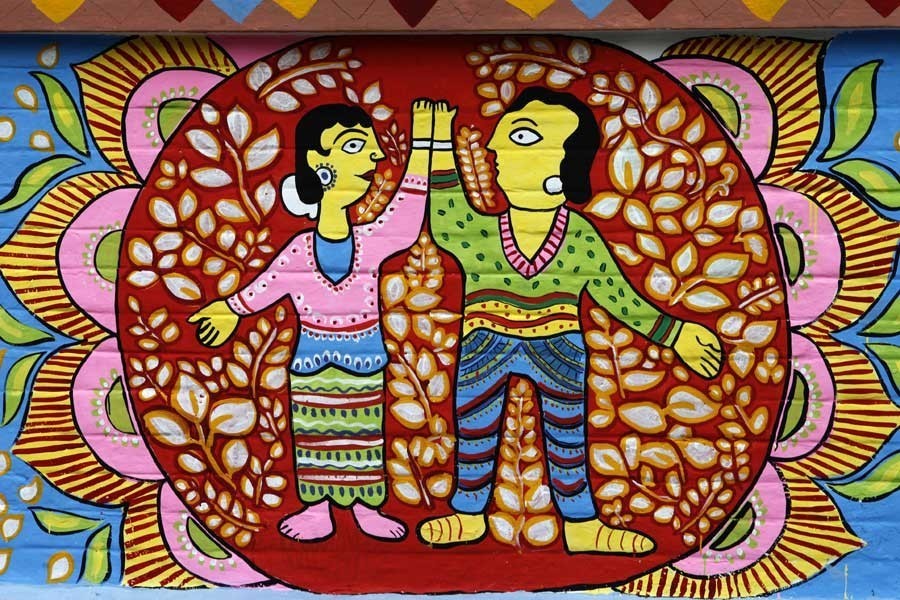At the break of dawn today, the nation welcomes a New Yew Year -- the Bangla Noboborsho-1427 -- in a way unseen before in the history of the Bangalees. No elaborate preparation, as done every year, for celebration of the day was there for the atmosphere has been so darkened by a menace to humanity called coronavirus that people are forced to confine themselves to their homes in order to stay safe. Today's survival rule is social distancing in complete avoidance of social gathering. Shuvo Noboborsho has arrived at a most critical juncture of human existence on this planet. In time of raging corona that is claiming lives almost all across the planet including this land, people are in no mood for celebration. The nation would rather take a deep breath and hope that it is spared a large scale health emergency like those in Europe and the United States of America.
Indeed, a New Year is the time for renewal of life's journey and it is true both for an individual, family, friends, community, the nation and the entire human fraternity. In Bangladesh the celebration of Pahela Baishakh has assumed a remarkably artistic ambience, thanks to Chhayanaut, a cultural organisation, and the Institute of Fine Arts, Dhaka (formerly Art College), where musical soiree and a colourful procession lend the occasion its aesthetic charm and beauty. People will miss all such cultural expressions -ones that highlight a nation's growth from within. But apart from the Bangalees, the ethnic minorities in Chittagong Hill Tracts also celebrate at the same time their Boisabi Utsab colourfully and joyfully through rites, rituals, songs and dances. Such cultural diversity is a proof of a flourishing civilisation in this part of the world.
Coronavirus has deprived the people here and the Bangalees across the border and beyond of a much awaited annual festival close to their hearts. Sure enough, leaving aside some recent addition of razzmatazz imported by the affluent class to the celebration, the traditional observance of the first day of the New Year on the Bangla calendar is still marked by the artistic excellence of traditional agrarian rural society. And the place where these are on display is village fair without which celebration of the New Year remains incomplete. Dolls crafted out of clay, flutes, baskets and art works of home decoration out of bamboo, cane and papers make a bold statement of traditional village art.
All this will be sorely missed by the nation this time. But such a missed opportunity means more to the country's economy. There has been no business transaction of new outfits -mostly punjabi and shari that along with other accessories sell like hot cake on the occasion. Both big businesses and handloom industry will suffer on account of this. Potters who particularly look forward to Baishakhi fairs -both in village and towns -for their one-time annual business will be the worst off. The only consolation for them is that their creations will not perish if taken care of and may be preserved for next year's Baishakhi fair.
Yet the citizens share greetings on the day from the quietude of their homes with a sense of renewal through an unprecedented testing time. Shuvo Noboborsho!


